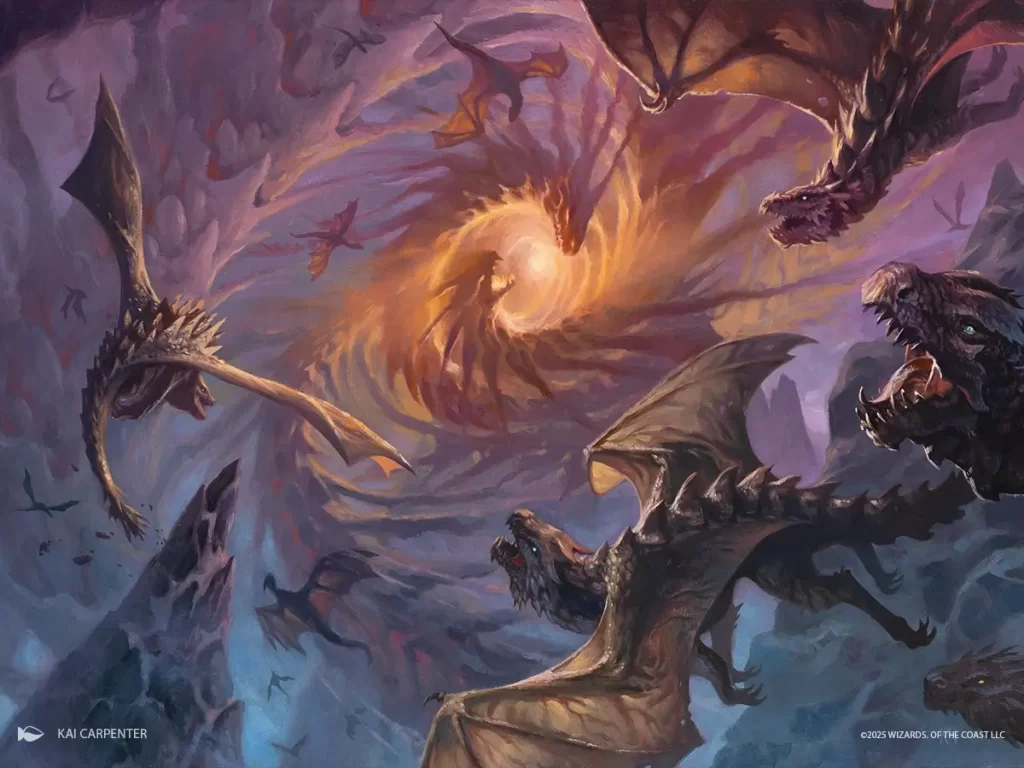
With the Magic: the Gathering Standard format still adjusting to recent bannings and the Edge of Eternity set looming, there’s growing curiosity around archetypes that were once overshadowed.
One of the decks quietly gaining traction among competitive players is Dimir Dragons. Traditionally, a fringe strategy, the deck now has breathing room thanks to the exit of key oppressive cards—particularly those that fueled aggressive midrange and tempo shells. With new tools on the horizon and fewer format-warping threats to contend with, Dimir Dragons could finally make their move from rogue brew to real contender.
At its core, Dimir Dragons is a control-leaning midrange deck that uses early interaction to stall the board before unleashing large, evasive threats. Its identity lies in a mix of efficient removal (like Go for the Throat, Cut Down, and counterspells) paired with powerful dragon finishers. Cards like Silumgar’s Scorn may not be legal, but spiritual successors often exist in blue-based control shells as provided by the Tarkir Dragonstorm deck. The goal is to grind through the early game, trade resources one-for-one, then stick a flying threat that wins in a few swings and is hard to answer cleanly.
The recent Standard bannings—specifically Monstrous Rage and Heartfire Hero—have significantly weakened hyper-aggressive Mono-Red strategies that previously kept slower decks in check. Without Monstrous Rage enabling early blowouts and Heartfire Hero providing cheap, die-trigger pressure, red aggro loses much of its ability to close games quickly or punch through removal. This shift opens the door for midrange and control builds like Dimir Dragons to stabilize more consistently in the early turns. With less pressure to survive turn-three kill setups, the deck can now lean into its strengths, which are efficient disruption, value-generating dragons, and inevitability in longer games.
What’s particularly exciting is how Edge of Eternity appears to be introducing a fresh suite of support for both Dragons and control strategies—potentially even within Dimir colors. Hints of tempo-positive flyers, discard synergy, and even graveyard recursion could give the deck more flexibility in both threat selection and game planning. If we get a dragon with built-in disruption or recursion (say, a dragon that reanimates or taxes opponents), Dimir will have a unique angle compared to the traditional red-based dragon lists.
As a competitive player, I’m watching Dimir Dragons closely. The strategy sits at the intersection of control and pressure—two things that thrive when the format slows down and stumbles through a shift.
The metagame is wide open, and if Edge of Eternity delivers just one or two efficient dragons or supporting tools, Dimir Dragons could turn from a side-table curiosity into a consistent tournament threat. This might be the deck that flies under the radar—until it starts flying over everything else.
Thanks for reading, and until the next blog post.
